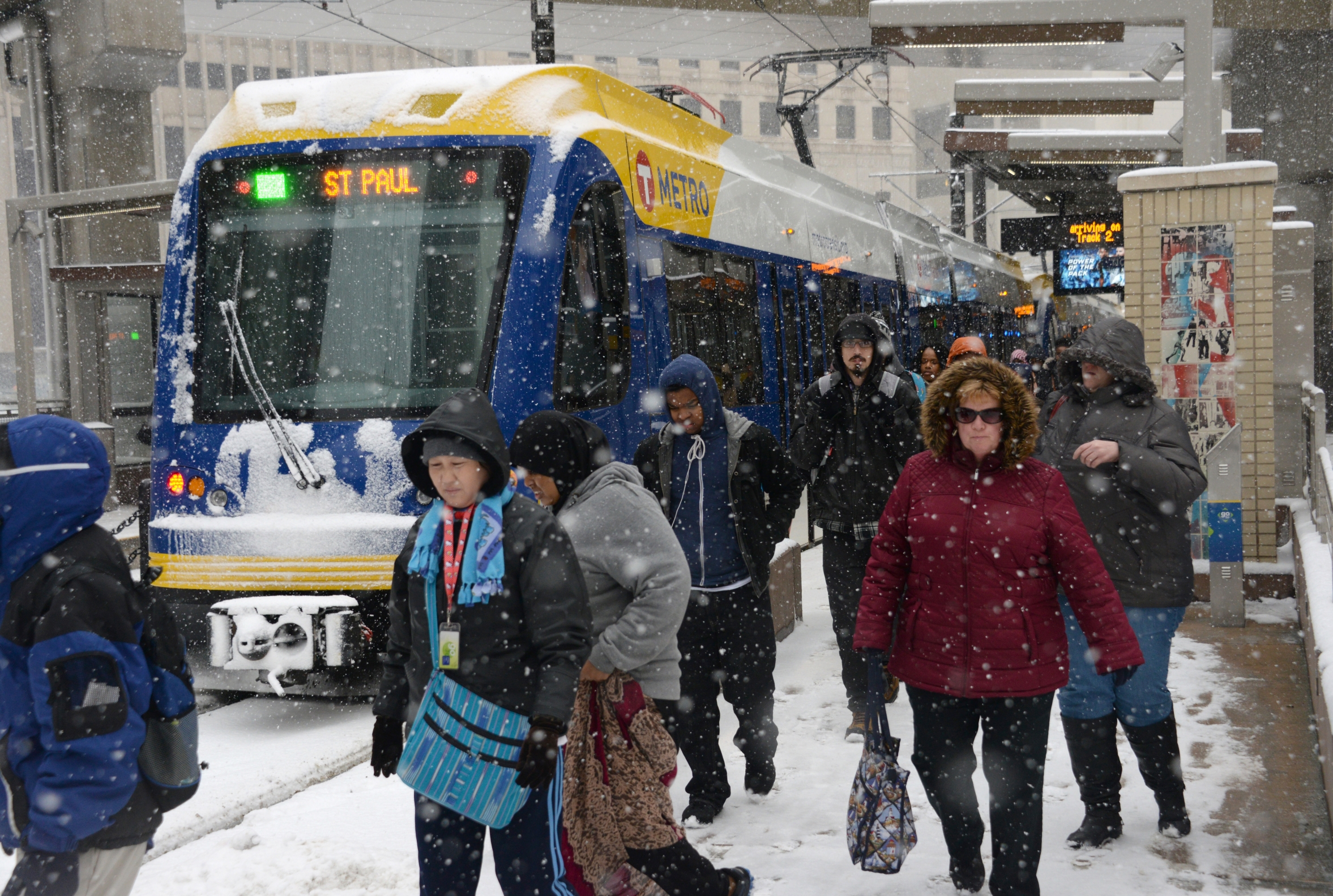
A record number of light rail and commuter rail rides were taken in 2017 as Metro Transit’s annual ridership topped 81.9 million.
Metro Transit has provided more than 80 million rides in each of the past seven years, sustaining the highest ridership the agency has seen in three decades. Average weekday ridership in 2017 was 264,347.
“Last year’s strong ridership underscores just how many people across the region are relying on us to get them safely to and from work, school and many other destinations,” Metro Transit General Manager Brian Lamb said. “On behalf of everyone at Metro Transit, I’d like to thank all those who are placing their confidence in us and making transit a part of their lives.”
The 2017 ridership total includes a record 13.1 million rides on the METRO Green Line, which has seen ridership grow every year since its 2014 opening and had its highest single-day ridership ever on Aug. 31, 2017. Nearly 10.7 million rides were taken on the Blue Line, breaking the previous record set in 2015.
Ridership on the Green Line increased about 3.5 percent compared to 2016, while Blue Line ridership increased nearly 4 percent.
Nearly 794,000 rides were provided on the Northstar Commuter Rail Line, a nearly 12 percent increase over 2016. Last year’s Northstar ridership broke a record set in 2013.
Metropolitan Council Chair Alene Tchourumoff announced the ridership records in her State of the Region address on Thursday.
“Congratulations and thank you to all our Metro Transit employees who play a role in providing a service that people across this region use in record numbers. This is yet another reminder that we do truly have one of the best transit systems in the nation,” said Chair Tchourumoff.
“2017 was a trifecta for our rail lines in the metro,” Hennepin County Commissioner Peter McLaughlin said. “With gas prices hovering at $2.50 per gallon, all three of our rail lines – Green, Blue, and Northstar – set ridership records. These three rail lines now constitute 31 percent of all rides on Metro Transit. This is another piece of strong evidence that rail investment is good for the Twin Cities.”
System-wide, ridership remained essentially flat compared to 2016.
Metro Transit provided more than 57.3 million bus rides in 2017, including more than 1.5 million rides on the A Line. Average weekday ridership in the A Line corridor has increased by about one-third since the rapid bus line opened.
“The A Line is a prime example of the investments this region needs,” said B Kyle, president & CEO of the Saint Paul Area Chamber of Commerce. “Bus rapid transit is an integral part of the system, which we know the vast majority of people are using to get to work or school. Every day I hear from our business members how critical transit investments are to their ability to attract and retain talent.”
“Our region needs to keep the momentum we’re seeing with these ridership records,” said Jonathan Weinhagen, president & CEO of the Minneapolis Regional Chamber of Commerce. “Continuing to maintain and improve our regional system will pay huge dividends for everyone, not just the business community. We’ve reached a tipping point where maintaining the status quo means we’re falling behind our peer regions. It’s time to double down on transit investment.”
Total bus ridership declined about two percent. The decline mirrors a national trend attributed in part to low gas prices. Ridership losses were greatest during off-peak hours and on routes that were detoured off Nicollet Mall during construction.
| |
2017 Ridership |
2017 Average Weekday Ridership |
|
Bus
|
55,742,961
|
184,736
|
|
Green Line
|
13,142,163
|
40,554
|
|
Blue Line
|
10,668,832
|
31,510
|
|
A Line
|
1,579,670
|
4,727
|
|
Northstar
|
793,796
|
2,819
|
|
Total
|
81,927,422
|
264,347
|